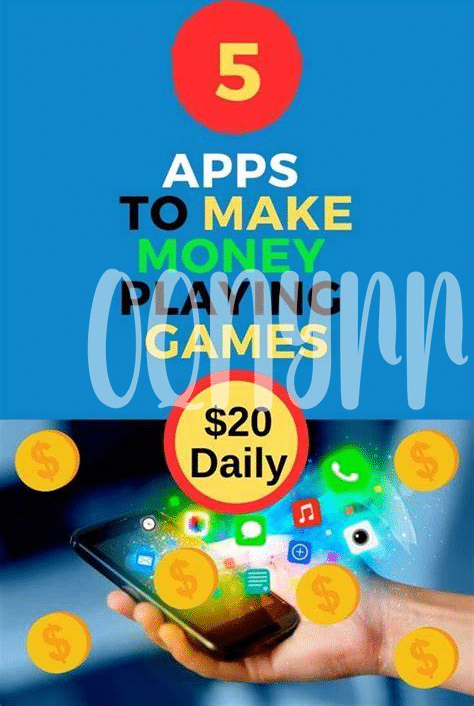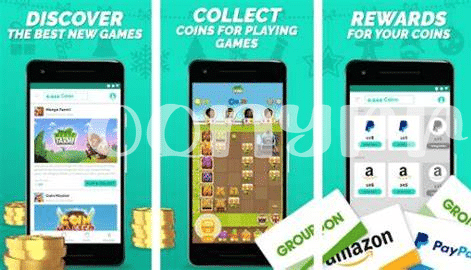
- Unveiling the Titans: Top-grossing English Gaming Apps 🎮
- Turn Playtime into Payday: Understanding In-app Monetization 🤑
- The Freemium Model: Strategies for Maximizing Earnings 🆓➡️💰
- Social Gaming Surge: Leverage Multiplayer Features for Profit 🤝
- Ad Power: Boosting Revenue with In-game Advertising 💼
- Insider Tips: Expert Advice for Enhancing Game Revenue 📈
Table of Contents
ToggleUnveiling the Titans: Top-grossing English Gaming Apps 🎮
In the realm of digital entertainment, certain games rise to legendary status, capturing the hearts—and wallets—of millions. Enthroned upon the peak of the app store charts, these gaming apps become more than mere pastimes; they evolve into cultural phenomena. Among these, a select few dominate the English-speaking market, setting the gold standard for success. Picture the vibrant landscapes of “Clash of Clans” 🏰, a strategy staple that continues to enchant players with its clan wars and fortification challenges. Or consider the endless, candy-crushing saga of “Candy Crush,” 🍬 a title synonymous with addictive gameplay that has sweetened the profit margins of its creators.
| Game | Description | Revenue Model |
|---|---|---|
| Clash of Clans | Strategy-based game where players build and defend clan strongholds | In-app purchases, Clan Wars feature |
| Candy Crush | Match-3 puzzle game with thousands of levels and social leaderboards | In-app purchases, Advertisements |
Let’s not forget the phenomenon of “Fortnite” 🎉 that managed to transcend gaming platforms, offering an experience loved globally, galvanizing its position through high-stake tournaments and in-game cosmetic sales. These paragons not only provide exhilarating escapades for players but also exemplify the lucrative potentials of gamified monetization. Their common thread? A blend of intuitive gameplay and cunning business models that ensure their titles remain etched at the top of the charts.
Turn Playtime into Payday: Understanding In-app Monetization 🤑
Harnessing the art of in-app monetization transforms casual gaming into a potent revenue stream. For developers, understanding the psychology behind player spending is crucial. It’s not merely about promoting in-game purchases but creating an environment where players perceive value, driving them to willingly invest in virtual goods or benefits. By tapping into the desire for progression, exclusivity, or competitiveness, developers can design enticing packages that go beyond mere cosmetic enhancements. Power-ups, exclusive levels, and convenience features—like saving time—are commonly leveraged elements to open players’ wallets.
In this digital playground, the alignment of player incentives with monetization tactics spells success. Engaging players through regular content updates and limited-time offers keeps the game fresh and the financial incentives rolling. Gamers on the hunt for progression or distinction are more likely to convert into paying users when tantalizing prospects are within reach. It’s a delicate balance; ensuring the game remains fun and accessible while weaving in opportunities for monetization that resonate with players’ motivations and playing habits. By mastering these strategies, developers can effectively convert playtime into payday, ensuring sustainability in the ever-evolving gaming landscape.
The Freemium Model: Strategies for Maximizing Earnings 🆓➡️💰
Embarking on the voyage of freemium gaming is akin to planting a seed and nurturing it into a towering tree of revenue. Initially, players are welcomed into the gaming universe without dipping into their wallets, fostering a sense of ease and accessibility. 🌱 But to ensure this sapling grows, developers must ingeniously entice gamers with captivating content that urges them to reach for more – be it through aesthetic enhancements, exclusive levels, or power-ups that promise a tantalizing edge over competitors. This technique not only retains players but also opens a portal to consistent earnings as loyal users are willing to pay for the premium features they’ve sampled and loved.
To cultivate a garden of profits, savvy developers weave in tiers of value within the game’s architecture, cleverly balancing free and paid elements. 🪴 They create a journey so engaging that players, propelled by their desire to progress, will gravitate towards in-app purchases. By analyzing player behavior and preferences, developers can tailor their offerings to match user expectations, ensuring that every dollar spent within the app enhances the player’s experience – converting free players into paying patrons and transforming casual play into a flourishing enterprise.
Social Gaming Surge: Leverage Multiplayer Features for Profit 🤝
The landscape of mobile gaming is swiftly embracing the camaraderie of multiplayer experiences, transforming digital playgrounds into gold mines for developers and players alike 🤑. As friendships and rivalries ignite across the world in virtual arenas, savvy creators are tapping into the inherent sociability of humans, weaving multiplayer functionality into the fabric of their apps. This clever integration encourages organic growth, as players invite peers to join the fun, effectively slicing through marketing budgets with the sword of word-of-mouth promotion. The key to unlocking this treasure chest lies in understanding the relationship dynamics within these apps, capitalizing on them to deliver a richer, more engaging experience 🎉. A perfect illustration of leveraging this trend is embedded in pages like the what is the best facebook app for android 2024 top 5 apps, demonstrating how social connections can amplify an app’s appeal and profitability. By intertwining social elements with addictive gameplay, developers can harness the viral potential of social networks, propelling their gaming app into the stratosphere of earnings 💼🚀.
Ad Power: Boosting Revenue with In-game Advertising 💼
In the dynamic world of mobile gaming, in-game advertising has become a golden ticket for developers looking to flourish in a saturated market. It’s a fine art, one that involves placing ads in a way that feels natural and unobtrusive to the gaming experience. 🎮✨ When done right, these ads can significantly bolster a game’s revenue without alienating the player base. Engaging video ads, unmissable banner placements, and cleverly timed interstitials are all part of the playbook. As players dive deeper into their favorite worlds, these ads become a gateway, offering virtual currency or in-game perks for their precious attention.
Yet, it’s not just about plastering ads and hoping for the best. Savvy developers employ analytics to understand player behavior, which allows for targeted advertising – making every ad slot count. 👁️💡 Innovative approaches such as rewarded videos encourage players to voluntarily engage with ads, creating a win-win situation. With the table below, we unfold the distinct types of in-game ads and their potential impact on revenue:
| Ad Type | User Experience | Revenue Potential |
|---|---|---|
| Rewarded Video | Positive (User-initiated) | High |
| Interstitials | Moderate (Timed Appropriately) | Medium to High |
| Banners | Neutral (Passive) | Low to Medium |
| Playable Ads | Engaging (Interactive) | High |
| Offerwalls | Positive (User-initiated) | High |
Leveraging these arsenal tools selectively can transform ads into a robust revenue stream without compromising the immersive experience gamers crave. 🚀💰
Insider Tips: Expert Advice for Enhancing Game Revenue 📈
Venturing beyond the standard profit strategies, experienced developers suggest keen attention to player lifecycle value. 🚀 By regularly updating content and fostering a thriving community, games can sustain player interest and prolong engagement. Events, tournaments, and limited-time offers create urgency and increase spending. Metrics like Daily Active Users (DAUs) and Average Revenue Per User (ARPU) should be meticulously tracked to tailor player experiences, ensuring content resonates and prompts continuous investment.
Diving deeper, harnessing data analytics provides a clearer vision of player behavior. 📊 Focused A/B testing enables creators to fine-tune elements like difficulty curves, in-app purchase packages, and reward timings—optimizing the conversion funnel. Collaborations with influencers can amplify a game’s visibility, often leading to a surge in both players and revenue. By interweaving these elements into a cohesive strategy, developers unlock new realms of profitability within their gaming apps.




